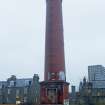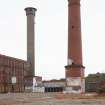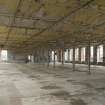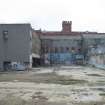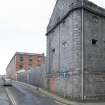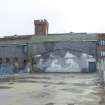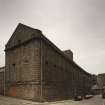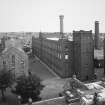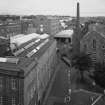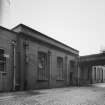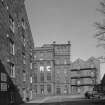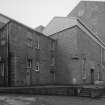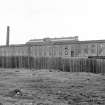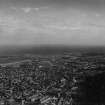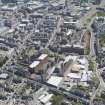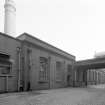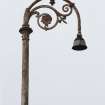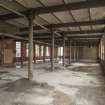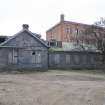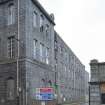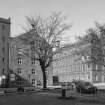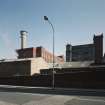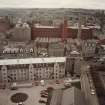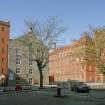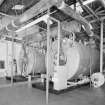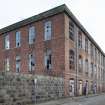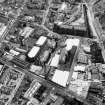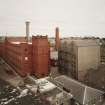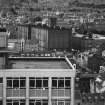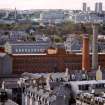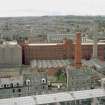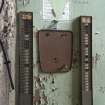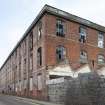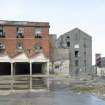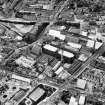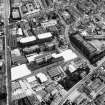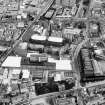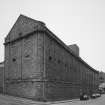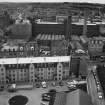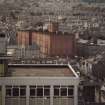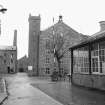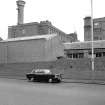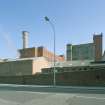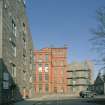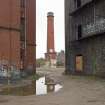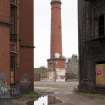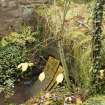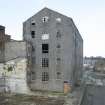Following the launch of trove.scot in February 2025 we are now planning the retiral of some of our webservices. Canmore will be switched off on 24th June 2025. Information about the closure can be found on the HES website: Retiral of HES web services | Historic Environment Scotland
Aberdeen, Maberly Street, Broadford Works
Canvas Works (19th Century), Linen Mill (19th Century)
Site Name Aberdeen, Maberly Street, Broadford Works
Classification Canvas Works (19th Century), Linen Mill (19th Century)
Alternative Name(s) Ann Street; Hutcheon Street; Broadford Linen Mills; Broadford Firehose And Canvas Works
Canmore ID 20026
Site Number NJ90NW 125
NGR NJ 93560 06922
NGR Description Centred on NJ 93560 06922
Datum OSGB36 - NGR
Permalink http://canmore.org.uk/site/20026
First 100 images shown. See the Collections panel (below) for a link to all digital images.
- Council Aberdeen, City Of
- Parish Aberdeen
- Former Region Grampian
- Former District City Of Aberdeen
- Former County Aberdeenshire
NJ90NW 125.00 Centred on NJ 93560 06922
See Architecture (photographs)
NJ90NW 125.01 NJ 93584 06814 and c.NJ 936 068 Building; Sundial
NJ90NW 125.02 NJ 93582 06760 Warehouse (Flax Store)
NJ90NW 125.03 NJ 93570 06966 Boiler House
NJ90NW 125.04 NJ 93653 06915 Warehouse (Batching and Carding)
NJ90NW 125.05 NJ 93638 06826 Office
NJ90NW 125.06 NJ 93661 06852 Warehouse (Raw Flax)
NJ90NW 125.07 NJ 93678 06857 Storehouse (Waste cleaning)
NJ90NW 125.08 NJ 93703 06892 Storehouse (Wood Store)
NJ90NW 125.09 NJ 93615 06974 Warehouse (Hose Weaving)
NJ90NW 125.10 NJ 93611 06914 Mill (New Mills)
NJ90NW 125.11 NJ 93519 06879 Mills; Warehouse (Sewing, Weaving and Wefting Mills etc)
NJ90NW 125.12 NJ 93543 06950 Mill (Winding and warping)
NJ90NW 125.13 NJ 93571 06877 Mill (Old Mill, South Mill and New Mill)
NJ90NW 125.14 NJ 93582 06936 Engine House
(Location cited as NJ 936 068). Broadford (linen) Mills, Maberley Street; founded in 1808. A large and interesting group of buildings, the most striking being a 4-storey, 15-bay windowless brick flax store with castellated central tower and corner turrets. The earliest part appears to be a handsome 4-storey and attic granite block with a bellcote, modified by the addition of a brick water- and stair-tower. There are three other large brick ranges, two granite flax stores, and a tall square-section brick chimney, built 1864.
J R Hume 1977
Architect, Archibald Simpson - chimney
Information from RCAHMS, August 1995
The S half (1912) is a huge imposing brick warehouse, articulated by pilaster strips, five small arches on the top floor of each bay, a central battlemented tower, and two smaller turrets in the N corners.
NMRS, MS/712/83.
A conservation plan was produced for this building by Page and Park Architects in June 2000.
The following is a key to National Record of the Historic Environment (NRHE) drawing number DC51073 (and see See Fig. 8 in Textile History, 23 (1992)):
A: Old Mill (1808) - fireproof spinning mill;
B: South Mill (c.1820-30) - fireproof spinning mill;
C: New Mill (c.1860) - fireproof spinning mill, single off-centre row of columns, except at north end , where columns are three deep;
(A, B, C re-roofed 1922-3. Stair and lavatory towers were then added, and the boiler and stove house demolished)
D: Bundling and Twisting, originally hackling (1808, demolished c.1980), fireproof with single row of cruciform columns on ground floor;
E: Engine Houses - That between the spinning mills, flat-roofed and with heavy cast-iron veiling beams, had a tandem horizontal compound [engine] replaced by electricity in 1935. The twin-beam engine house in the north weaving shed was rebuilt in 1908 for an engine still working in 1935;
F: Mechanic and Joiners Shops (c.1830-60). Demolished c.1980;
G: North weaving shed, single storey (mid-19th century). Maberly pioneered power loom linen weaving in 1824 but this appears to be a later building;
H: Hackling Building (c.1860), internally rebuilt with arched concrete floors on steel beams , c.1900. Dressed flax store at north end added 1910;
I: South Weaving Shed (c.1870), extended over basement flax, tow and yarn stores, and hemp breaking and softening department by architects Wilson and Walker in 1909 and rebuilt in the 1980s;
J: Weaving amd Weft Winding Mill (1912) by Wilson and Walker, reinforced contrete, brick-clad with flat roof. Cropping and cloth inspection at north end;
K: Calender House (c.1870), lofty single storey and mezzanine for cloth finishing;
L: Sewing Mill (1904) by R G Wilson. Arched floors on iron columns. Steel roof trusses. On the site of three-storey hand loom factory (c.1811-14);
M: Winding and Warping (c.1850 and c. 1880), two- and three-strorey timber-sided buildings. Tall square chimney dated 1862;
N: New South and New North Mills (1913), by Wilson and Walker. Carding and preparing and spinning in large fireproof red brick mill, single arches on single row of columns;
O: Offices (19th century) built in at least three phases;
P: Hose Pipe Weaving (c.1900) now blending, internally re-constructed. Two tall cylindrical towers one brick, one concrete, served to test and dry the hose pipes;
Q: Batching, breaker cards and old machinery store (1913, later extended). Single storey, with fire barriers;
R: Boiler House (c.1862), with later economiser;
S: Waste Cleaning House and Dust Store (c.1913);
T: Dining Hall;
U: Raw Flax Warehouses. The smaller block is granite clad, c.1870, the larger and turreted brick 'fortress' by Wilson and Walker (1911-13), ferro concrete (Hennebique floors). Each have galleries for external access.
Sources: Information from Richards PLC. 1904-1913 alterations information extracted from the Dean Of Guild drawings.
Watson, 1992.
NJ90NW 125.00 centred 93560 06922
Architect: Archibald Simpson - chimney
Brick clad, arched windows, Hennebique Ferro-concrete framed factory with single storey link to Sewing Mill. 3 by 26 bay long elevation to Ann Street, part of large group of textile manufacturing and storage buildings, granite and brick-clad, of iron-framed or reinforced concrete construction, with setted streets between them. Slate or flat concrete roofs.
The oldest iron-framed mill in Scotland and the fourth oldest known to survive in the world (after others of 1796, 1804 and 1805, all inter- related). The adjoining South Mill may be the third iron framed building in Scotland.
Built for Scott Brown and Co (of Angus), 1808, bankrupt 1811 and sold to Sir John Maberly MP, entrepreneur, speculator and introducer of jute to the UK. Maberley rapidly developed Broadford Works, adopting the first gas lighting of an industrial complex in Scotland, by Boulton and Watt in 1814-15, and Scotland's second power loom linen weaving factory in Scotland in 1824. Maberly was himself bankrupt and in 1834 the works passed to Richards and Co, who had a bleachworks at Rubislaw and branches at Montrose, produced canvas tarpaulins and as a particular specialism, fire hoses. Latterly man- made fibres for carpet yarn etc has replaced flax. Employment peaked at 3,000, once the largest single employer in Aberdeen. (Historic Scotland).
Five storey sewing mill, 3 by 12 bays, oculi to gables. Bricked arched floors on iron columns. Steel roof trusses to pitched slate roof. Part of large group of textile manufacturing and storage buildings, granite and brick-clad, of iron-framed or reinforced concrete construction, with setted streets between them. Slate or flat roofs.
The oldest iron-framed mill in Scotland and the fourth oldest known to survive in the world (after others of 1796, 1804 and 1805, all inter- related).
The adjoining South Mill may be the third iron framed building in Scotland.
Built for Scott Brown and Co (of Angus), 1808, bankrupt 1811 and sold to Sir John Maberly MP, entrepreneur, speculator and introducer of jute to the UK. Maberley rapidly developed Broadford Works, adopting the first gas lighting of an industrial complex in Scotland, by Boulton and Watt in 1814-15, and Scotland's second power loom linen weaving factory in Scotland in 1824. Maberly was himself bankrupt and in 1834 the works passed to Richards and Co, who had a bleachworks at Rubislaw and branches at Montrose, produced canvas tarpaulins and as a particular specialism, fire hoses. Latterly man- made fibres for carpet yarn etc has replaced flax. Employment peaked at 3,000, once the largest single employer in Aberdeen. (Historic Scotland).















































![Comparata sketch drawing of columns in early flax mills [by Mark Watson, 1992], A: Ditherington (Shrewsbury), 1797; B: Warehouse of 1805 [Ditherington]; C: Hackling wing, 1811 [Ditherington); D: Grandholm Works, Aberdeen, column and saddle, 1793-94, beams post-1821; E: East Mill, Dundee, 1799; F: Broadford Works, Aberdeen , 1808; G: Campions Mill, Whitby, 1814; H: Abbotsford Mills, Kirkcaldy, pre-1822; I: North Mill, Kirkcaldy, c.1809; J: Chapel Works, Montrose, 1828.](http://i.rcahms.gov.uk/canmore/l/DP00245795.jpg)


























































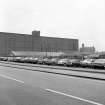
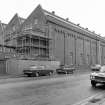
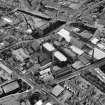

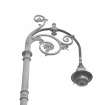
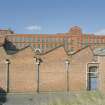
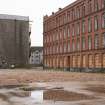
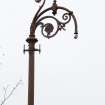


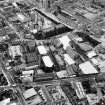

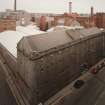
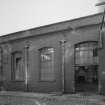
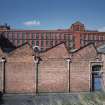


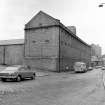
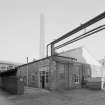
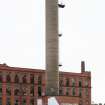
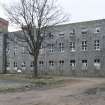
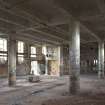

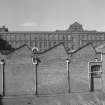

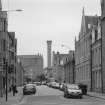
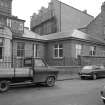
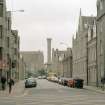
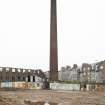
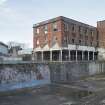


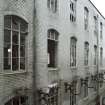
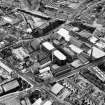
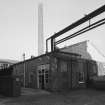
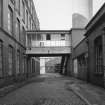
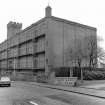
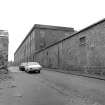
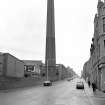
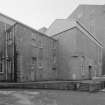
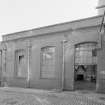
![Comparata sketch drawing of columns in early flax mills [by Mark Watson, 1992], A: Ditherington (Shrewsbury), 1797; B: Warehouse of 1805 [Ditherington]; C: Hackling wing, 1811 [Ditherington); D: Grandholm Works, Aberdeen, column and saddle, 1793-94, beams post-1821; E: East Mill, Dundee, 1799; F: Broadford Works, Aberdeen , 1808; G: Campions Mill, Whitby, 1814; H: Abbotsford Mills, Kirkcaldy, pre-1822; I: North Mill, Kirkcaldy, c.1809; J: Chapel Works, Montrose, 1828.](http://i.rcahms.gov.uk/canmore/s/DP00245795.jpg)
